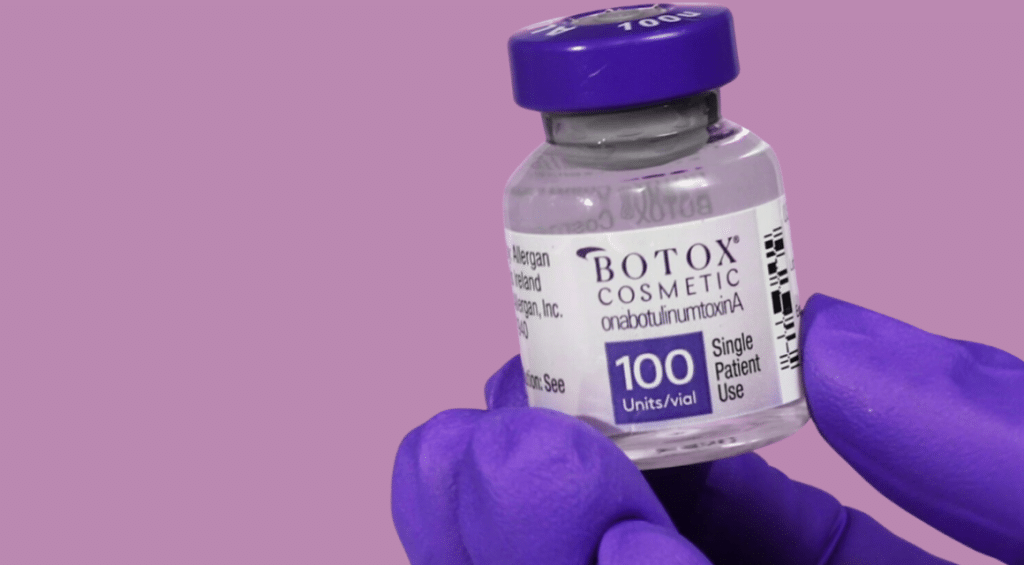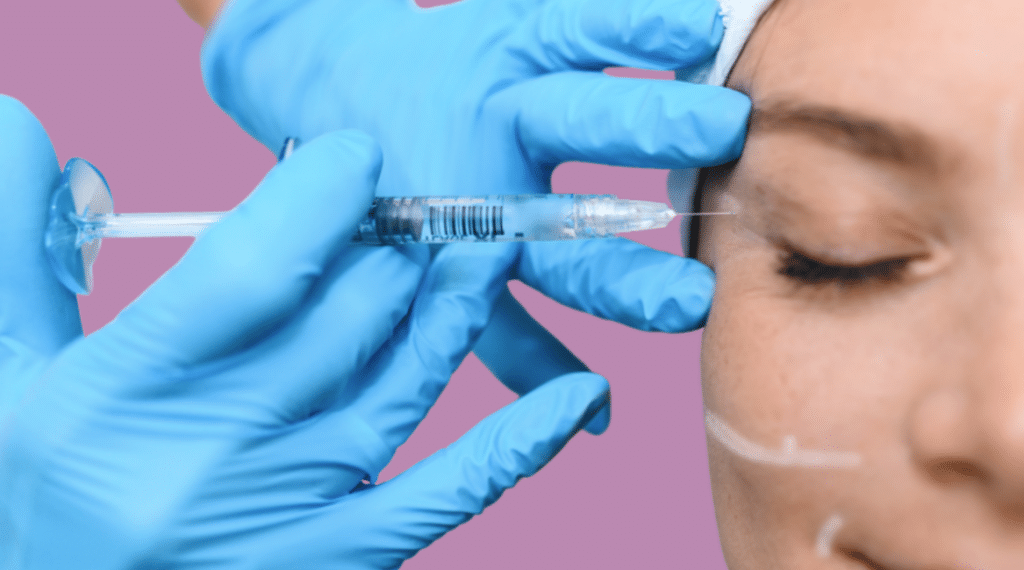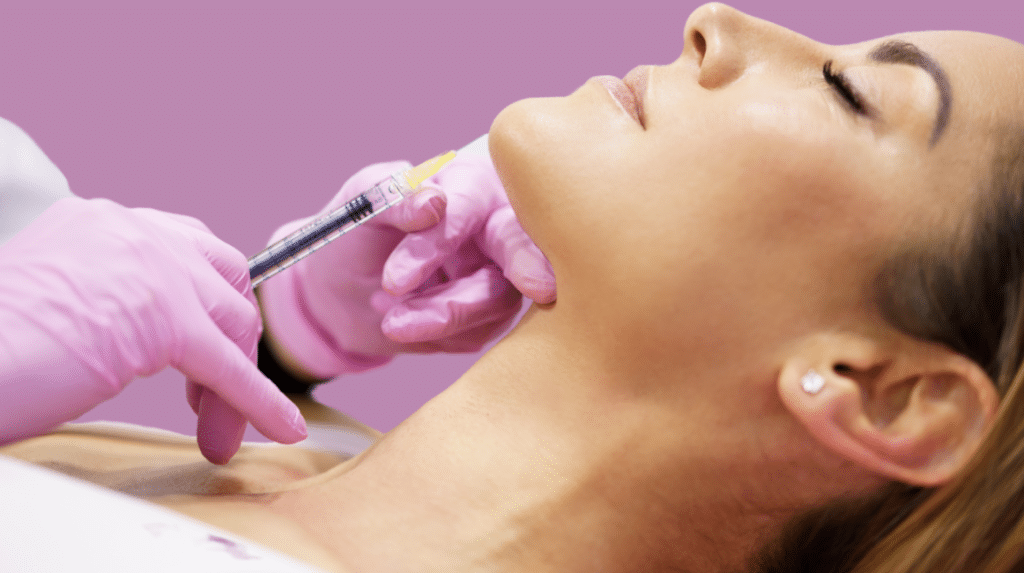According to the Center for Laser Surgery, Botox enhances facial aesthetics and is effective in facial contouring. By reducing the size of the masseter muscle, Botox effectively refines the jawline, demonstrating its capabilities beyond traditional aesthetic improvements.
Botox serves dual purposes: it beautifies and provides therapeutic advantages. Whether sculpting a slimmer face, alleviating discomfort, or treating conditions like Masseter Hypertrophy and TMJ, Botox is a versatile solution in facial aesthetics and functional improvement.
This article will delve into Botox’s transformative effects on facial contouring and highlight its comprehensive benefits for those seeking cosmetic enhancements and relief from specific muscular issues.
Key Takeaways
- Botox is effective in facial contouring, especially for refining the jawline and enhancing facial aesthetics by reducing the masseter muscle size.
- It serves aesthetic and therapeutic purposes, including treating conditions like Masseter Hypertrophy and TMJ, beyond its common use for smoothing facial wrinkles.
- The procedure for facial contouring with Botox is minimally invasive, requires minimal downtime, and needs to be repeated every 3-6 months for maintenance.
- While offering aesthetic improvements and psychological benefits, Botox also comes with potential risks and side effects that are generally temporary but require careful consideration.
- Botox differs from other contouring treatments, such as fillers and surgical options, by providing a less invasive, temporary alternative for enhancing facial symmetry and aesthetics.
Understanding Botox and Its Uses

What is Botox?
Botox, scientifically known as botulinum toxin, is a highly potent neurotoxic protein derived from the bacterium Clostridium botulinum and related species. It works by inhibiting the release of the neurotransmitter acetylcholine at the neuromuscular junction, effectively causing a temporary paralysis or weakening of the muscles.
Common Applications of Botox in Aesthetics
Botox is utilized in small doses to address various health concerns, including temporarily smoothing facial wrinkles. Beyond its role in cosmetic enhancements, Botox is also employed in treating severe underarm sweating, cervical dystonia (a neurological disorder that leads to severe neck and shoulder muscle contractions), uncontrollable blinking (blepharospasm), misaligned eyes (strabismus), chronic migraine, and overactive bladder.
Botox for Facial Contouring

The Mechanism Behind the Slimming Effect
The slimming impact of Botox, especially in facial sculpting, stems from its capacity to relax injected muscles. For cosmetic goals, Botox’s temporary muscle paralysis or weakening enables facial contour adjustments.
By pinpointing muscles, Botox aids in refining jawlines, minimizing wrinkles, and enhancing facial contours for a more aesthetically pleasing look. Additionally, addressing the concern “Do you have to get Botox forever?” requires exploring its temporary nature and individual preferences.
Target Areas for Contouring with Botox
Botox is most commonly applied to areas of the face where muscle activity contributes to visible signs of aging or where alterations can enhance facial symmetry and contours. These include the forehead, around the eyes (crow’s feet), between the brows (frown lines), and the neck.
When used for facial contouring, Botox is strategically injected into areas like the masseter muscles (which can help reduce the jaw width for a more V-shaped face) or the platysma bands of the neck to provide a more lifted and refined look.
The Process of Facial Contouring with Botox
Consultation and Planning
A consultation is essential before beginning any Botox treatment for facial contouring. This stage involves a detailed discussion with a dermatologist or cosmetic practitioner about your aesthetic goals and concerns. The professional will assess your facial structure, focusing on the masseter muscle size and the overall facial symmetry.
This assessment helps customize a treatment plan tailored to achieve a slimmer, more contoured facial appearance, mainly focusing on creating a V-shaped jawline. It’s crucial to clearly understand the procedure, expected outcomes, and any potential side effects.
The Injection Procedure
The Botox injection procedure for jawline contouring is minimally invasive and can be completed in a doctor’s office. A thin needle injects small amounts of Botox into targeted muscles, primarily the masseter muscle, to relax and reduce their size over time.
The process might involve multiple injections based on the individual’s needs and the treatment plan. Typically, patients don’t experience significant discomfort; some may opt for topical anesthesia to numb the area before the procedure.
Post-Treatment Care and Maintenance
After receiving Botox injections, it’s advisable to avoid rubbing or massaging the treated areas for at least 24 hours to prevent the spread of the toxin to adjacent areas. Most individuals can resume their daily activities immediately after the procedure without significant downtime.
The procedure may need to be repeated every 3-6 months to maintain the desired results, as the effects of Botox are temporary. Following the specialist’s aftercare instructions is crucial for achieving the best possible outcome.
Benefits of Botox for Facial Slimming
Aesthetic Improvements
Botox for facial slimming primarily targets the masseter muscle, reducing its size to achieve a more feminine and symmetrical facial structure. This non-surgical method can effectively contour the jawline, enhancing facial aesthetics by creating a desirable V-line shape.
Besides, Botox injections can alleviate issues associated with a square jawline, leading to a softer, more youthful appearance. The procedure is especially popular among individuals seeking a non-invasive alternative to traditional jawline contouring methods.
Psychological and Emotional Benefits
Many individuals experience a boost in self-confidence and satisfaction with their appearance, contributing to an overall improvement in their quality of life. However, it’s important to acknowledge potential Botox emotional side effects, as reactions can vary widely among patients.
Some may feel dissatisfied if the results do not meet their expectations, which can impact their emotional well-being. The procedure can particularly benefit those self-conscious about a wide or square jawline, giving them a more proportionate face and renewed self-esteem.
Potential Risks and Considerations
Side Effects and How to Minimize Them
Common issues include headaches, urinary retention, upper respiratory infections, injection site reactions such as pain, bruising, tenderness, and redness), allergic reactions, drooling, drooping eyelids, asymmetry, nausea, and constipation. These effects are temporary and tend to resolve within days or weeks. However, more severe risks include difficulty swallowing, breathing, and vision problems.
Who Should Avoid Facial Contouring with Botox
People with certain medical conditions, such as myasthenia gravis, a neuromuscular disorder, might experience exacerbated muscle weakness after receiving Botox injections. Additionally, individuals with active infections at the proposed injection sites should postpone treatment.
Botox is not recommended for those who are pregnant or breastfeeding due to insufficient data on its safety in these groups. It’s also important to disclose if you’re on blood thinners or supplements that can increase bleeding and bruising risks. Botox should be approached with caution or avoided altogether by individuals allergic to any components of the injection.
Comparing Botox to Other Contouring Treatments
Botox vs. Fillers
Botox and dermal fillers serve different purposes in aesthetic enhancement. While Botox relaxes muscles to reduce the appearance of wrinkles and can slim the facial profile by targeting muscles like the masseter, fillers add volume to the face.
Fillers can enhance facial contours, smooth out wrinkles, or plump up areas like the lips or cheeks using substances like hyaluronic acid. Unlike Botox, which has effects lasting around 3-4 months, fillers can last from several months to over a year, depending on the type used and individual factors.
Botox vs. Surgical Options
Comparatively, surgical options for facial contouring, such as jawline surgery or facelifts, offer more permanent results. These procedures can reshape the bone and remove excess skin or fat, leading to significant changes in facial appearance. However, surgeries have higher risks, longer recovery times, and a greater cost.
Botox, being non-surgical, provides a less invasive, lower-risk, and temporary alternative for those seeking subtle enhancements or not ready for surgery. The choice between Botox and surgical options depends on the individual’s goals, willingness to undergo surgery, and acceptance of the potential risks and recovery associated with surgical interventions.
Conclusion
Botox is a versatile and effective solution for individuals seeking to improve their facial aesthetics through contouring. Targeting specific facial muscles can create a more defined and aesthetically pleasing appearance while offering therapeutic benefits for specific conditions.
However, prospective patients should consider the temporary nature of the results, potential side effects, and the need for ongoing treatments to maintain their desired appearance. A thorough consultation with a healthcare professional is essential to ensure that Botox is an appropriate and safe option for their needs.
FAQs
- What is Botox, and how does it work for facial contouring?
It is used in small doses for various aesthetic and therapeutic purposes. For facial contouring, it refines the jawline by reducing the size of the masseter muscle, contributing to a more contoured facial appearance.
- What are the common areas targeted for contouring with Botox?
Common areas include the forehead, around the eyes (crow’s feet), between the brows (frown lines), the neck, and the masseter muscles for jawline contouring, aiming to enhance facial symmetry and aesthetics.
- What should I expect during the Botox injection procedure for facial contouring?
The procedure is minimally invasive, performed with a thin needle to inject Botox into targeted muscles. It involves minimal discomfort and allows immediate return to daily activities, with results appearing gradually.
- Are there any risks or side effects of Botox for facial contouring?
Yes, common side effects include temporary discomfort, bruising, or swelling at the injection site, with more severe risks being very rare.
- How does Botox compare to other facial contouring treatments?
Botox offers a less invasive, temporary alternative to surgical options with minimal downtime. Unlike fillers, which add volume, Botox relaxes muscles to refine facial contours, each serving different aesthetic goals.
References
Washington Institute of Dermatologic Laser Surgery. (n.d.). Botox for TMJ & Masseters. Retrieved from https://lasersurgery.com/treatments/botox-tmj-masseters/
Derm Collective. (n.d.). 15 Botox Side Effects: Everything That You Need to Know. Retrieved from https://dermcollective.com/botox-side-effects/
MedlinePlus. (n.d.). Botox. Retrieved from https://medlineplus.gov/botox.html
Mayo Clinic. (2023, March 10). Botox injections. Retrieved from https://www.mayoclinic.org/tests-procedures/botox/about/pac-20384658





















